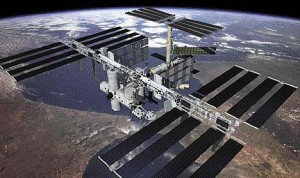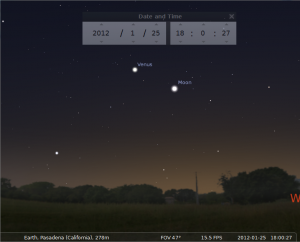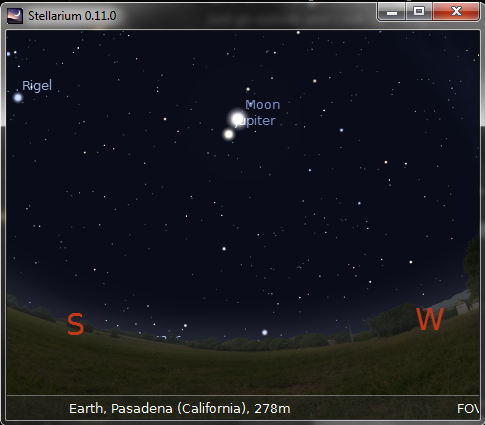Tonight (Jan 25) the slim crescent of the Moon will be hanging out just a little to the right of the planet Venus. Just look over in the west shortly after sunset (which is 5:15pm tonight) and you will see them both hanging out there. Venus will be the brightest “star” you can see over in the western sky (WSW to be precise). Continue reading
Monthly Archives: January 2012
Quadrantids Meteor Shower – Tonight (if you can be up at 3am)

False-color image of a rare early Quadrantid, captured by a NASA meteor camera in 2010. (NASA/MEO/B. Cooke)
The very first Meteor shower of 2012 may provide someone somewhere some spectacular show. The Quadrantids are known for producing at times anywhere from 80-200 meteors per hour. Due to the high speed of entry to our atmosphere (faster than other showers) they can burn up very brightly.
Continue reading
Yes – That’s Jupiter right beside the Moon tonight.
So… there are a couple of really neat things to look up at tonight. The first is that very bright passing of the ISS at 6:17pm for anyone in Southern California. Then – just locate the Moon and the very bright “Star” near it is in fact the largest planet in the solar system – JUPITER.
Just get out and take a look – why don’t ya!!
Enjoy!
Starting 2012 strong – the International Space Station – a treat for all in Southern California.

The International Space Station will be a special treat for all of us in Southern California over the next several days. We will have some truly spectacular “fly-overs” where the station will be perfectly aligned with the sun for some of the brightest passes theoretically possible.
For those of you who may be new to viewing it the ISS will be visible as one of the brightest (mostly the brightest) star-like object in the sky as it passes approx 200 miles overhead at over 17000 mph. The table below gives a lot of information about each visible pass including when and where to look. The lower the Mag number the brighter the ISS will be. So for example the pass on Monday 2 Jan at 6:17pm is the brightest one in the list at -3.4.
Click on the date for each pass for further detail.
| Date | Mag | Starts | Max. altitude | Ends | ||||||
| Time | Alt. | Az. | Time | Alt. | Az. | Time | Alt. | Az. | ||
| 2 Jan | -3.4 | 18:17:27 | 10 | NW | 18:20:38 | 58 | NE | 18:20:51 | 56 | ENE |
| 3 Jan | -2.2 | 17:21:07 | 10 | NNW | 17:23:55 | 26 | NE | 17:26:40 | 10 | E |
| 3 Jan | -1.0 | 18:57:25 | 10 | WNW | 19:00:00 | 22 | SW | 19:00:24 | 22 | SW |
| 4 Jan | -2.7 | 18:00:18 | 10 | NW | 18:03:28 | 57 | SW | 18:06:36 | 10 | SSE |
| 5 Jan | -3.2 | 17:03:37 | 10 | NW | 17:06:49 | 53 | NE | 17:09:57 | 10 | ESE |
| 5 Jan | 0.4 | 18:42:17 | 10 | WSW | 18:42:35 | 10 | SW | 18:42:53 | 10 | SW |
| 6 Jan | -0.7 | 17:43:24 | 10 | WNW | 17:46:06 | 24 | SW | 17:48:45 | 10 | S |
| 8 Jan | 0.9 | 17:27:28 | 10 | WSW | 17:28:31 | 11 | SW | 17:29:32 | 10 | SW |
| 11 Jan | 0.0 | 06:30:38 | 10 | S | 06:32:58 | 18 | SE | 06:35:18 | 10 | E |
All of the predictions above provided by Heavens-Above.com where you can get your own predictions for this and many other neat things to see in the sky above you.

